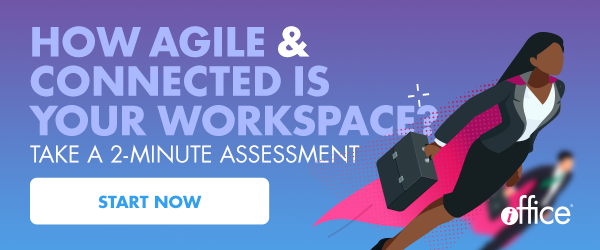How to Support Neurodiversity in the Workplace


Supporting neurodiversity in the workplace means creating an environment that’s inclusive of all types of people, including people who may have neurological differences. Here’s another way to look at it: If Einstein was in your office today, would he feel welcome?
The man whose name is synonymous with “genius” was actually slow to speak as a child, struggled through school and had a hard time finding a job. His devotion to a few specific subjects, insistence on routines and disregard for social convention (including a refusal to wear socks) has led some researchers to believe he may have had a high-functioning form of autism.
Neurodiversity includes a wide range of neurological differences in people, including people with an autism spectrum disorder (ASD), dyspraxia, dyslexia and attention deficit hyperactivity disorder (ADHD).
Supporting neurodiversity in the workplace is not only the right thing to do; it can also give you a competitive advantage. Here’s why and what workplace leaders can do to accommodate every type of mind in the workplace.
Advantages of Neurodiversity In the Workplace
It’s difficult to know just how many people are affected by neurological differences because many are never diagnosed. Here’s what we do know about neurodiversity, according to the Centers for Disease Control and Prevention (CDC):
- Approximately one in 59 children have been diagnosed with an autism spectrum disorder.
- Almost half of children with ASD (44 percent) have above average intellectual ability.
- An estimated 50,000 teens with ASD enter adulthood each year, aging out of school-based autism services.
- Approximately 9 percent of children ages 2-17 (6.1 million) had been diagnosed with attention-deficit hyperactivity disorder (ADHD) as of 2016.
- Seven million children received special education services from 2017-18; 34 percent had specific learning disabilities.
Although neurodiverse people have a wide range of abilities and challenges, the same wiring that makes some people think and act differently is often what makes them exceptionally talented, said Gail Saltz, author of The Power of Different: The Link Between Disorder and Genius, in a recent CNN article.
For instance:
- Research has found people with low impulse control are more likely to act on their creative thoughts, “which is why you have a lot of entrepreneurs who have ADD at a high level.”
- People with dyslexia tend to be particularly good at visual processing and recognizing patterns. Saltz’s book includes a profile of Dr. Beryl Benacerraf, a professor whose aptitude for pattern recognition helped her discover a fetal indicator for Down Syndrome.
- People with Asperger’s Syndrome often have unique strengths, which may include strong memory and focus and a tendency to be detail-oriented.
How To Support Neurodiversity In The Workplace
Unfortunately, most employers “are not designing workplaces where [neurodiverse people] can be successful,” said Kay Sargent, senior principal and director of HOK’s global WorkPlace practice. “We’re designing workplaces where they can fail. We need to think about how we can design more inclusive spaces.”
While you may not be aware of all the unseen challenges your employees face—whether they are neurodiverse, have a physical health condition or struggle with mental health issues like anxiety or depression—one of the best ways to make everyone feel welcome is to give them options.
For instance, many employees find an open office environment overstimulating, whether they are neurodiverse or just more introverted by nature.
Offering an activity-based working (ABW) environment where employees can collaborate and also retreat to more private spaces to work quietly is a good first step.
Other people struggle to stay focused at a standard desk all day, so giving them the option to use standing desks and more comfortable soft seating can help.
You can also implement design elements that reduce office noise, such as noise absorbing furniture and flooring.
While more inclusive design can certainly help, supporting neurodiversity in the workplace is a broader issue that starts even before employees are hired.
Hiring managers should be educated on potential biases in the hiring process that may negatively impact neurodiverse people. For instance, some neurodiverse people struggle to make eye contact or have a harder time connecting during standard face-to-face interviews.
Be as upfront as possible about the job description for which candidates are applying, what tasks will be involved and what skills are essential. Be transparent about how their performance will be evaluated, and what they can expect day-to-day
Instead of relying solely on a first impression, ask candidates to provide work samples or complete tasks relevant to the job they’ll be doing.
A workplace that supports all types of diversity—including neurodiversity—is not only better for employees; it also leads to greater innovation.
Different perspectives produce more ideas and better outcomes. Every individual brings unique strengths that enrich the whole team. And if your workplace only caters to a certain type of person, you may never know what—or whom—you’re missing.
